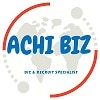 EMPLOYEE ONBOARDING PROCESS
EMPLOYEE ONBOARDING PROCESS
What is called employee onboarding process?
Employee onboarding is the process of introducing new employees to the organization’s environment and culture. However, the time taken to achieve that might vary from one organization to another as it depends on the nature and environment of the business. A few organizations consider onboarding a one-day affair whereas others stretch it out beyond one year.
The sample Template of Employee Onboarding Checklist
Essential New Hire Checklist Steps:
- Submit a job requisition form to HR.
Make the hire official with your HR department before proceeding any further.
- Complete a background check.
This is essential for many positions to ensure the safety and security of clients and colleagues.
- Review the schedule and job basics.
This is a chance to contact the employee and clarify the first week’s schedule, provide a timesheet if necessary, and supply basic info, like parking rules and dress code.
- Review job descriptions and duties.
Email the employee a copy of the job description, answer any questions, provide an overview of the functional area, and describe how the employee fits into the department. You can make this part of your new employee welcome letter.
- Complete all new hire forms.
Doing this before their first day will save both of you time and let you focus on more important things when they come into the workplace.
- Prepare team introductions.
Help integrate new employees into your organizational culture. Email their team to introduce the new hire, set up necessary meetings with key staff members, set up a workplace tour, and arrange social lunches or coffee dates.
- Prepare their work environment.
This includes cleaning their new space, getting business cards, access badges, and IT equipment such as computers, phones, etc.
- Prepare for new hire training.
Schedule any training and arrange for trainers, equipment, and space as necessary.
New Hire Checklists for Employers for the First Year:
Day one:
- Conduct a general job orientation, with a tour and introductions.
- Review the first week’s schedule and work hours.
- Review professional ethics and the code of conduct.
- Review all policies, such as safety and security policies.
- Explain compensation and benefits.
- Provide an employee handbook and answer any questions.
- Review the position information.
- Help set them up with computers or other equipment.
Week One:
- Give the employee any initial assignments.
- Touch base each day to ensure they are settling in.
- Review employee performance evaluations and set goals.
- Review the employee’s probationary period.
- Check that equipment assigned to the employee is functioning and answer related questions.
- Ensure the employee has met with key colleagues.
- Invite the employee to connect with any company social media accounts.
Month One:
- Continue to provide regular feedback.
- Ask for feedback from the employee.
- Review past assignments.
- Review upcoming assignments.
- Ensure the employee is on schedule with training.
- Check that employee payroll is running smoothly.
- Schedule regular meetings to keep the employee engaged.
After Three Months:
- Schedule an informal performance review.
- Review past and future assignments.
- Set performance goals.
- Give and ask for feedback.
- Check the employee’s progress on their training.
- Discuss the end of the probationary period.
After 6 Months:
- Conduct a six-month performance review.
- Review the employee’s goals and progress so far.
- Set goals and objectives for the next 6 months.
- Check that the employee has received all the necessary training.
After First Year:
- Conduct a yearly performance review.
- Recognize their first year at the company.
- Discuss goals, projects, and plans for the upcoming year.
- Answer any questions and give/receive feedback.
- Discuss compensation and raise policies.
FAQ ON NEW EMPLOYEE (HIRE) CHECKLIST AND ONBOARDING PROCESS
What kind of information should my new employee checklist contain?
|
Should my small business use a new employee checklist?Yes, sometimes small business owners don’t feel like they need something like this because they hire infrequently but having a new employee checklist is key because you’ll remember the exact process each time, be able to improve on it, and be able to hand it off to someone else as the company grows. |
Is it a good idea to store my new employee checklist for records?Yes, if you use something like local drive, Dropbox or Google Drive to store it you can access it anywhere, anytime, and share it with others who have the responsibility of taking care of the new hire onboarding and seeing how they are progressing. |
Are there any legal considerations with a checklist for hiring employees?Perhaps not directly, but your employee onboarding template can help you be sure to cover all your legal bases by indicating forms that need to be filled out, safety training that needs to be completed, and other necessary processes. In general, a hiring checklist template should help you avoid legal issues. |
Are there any legal considerations with a checklist for hiring employees?Perhaps not directly, but your employee onboarding template can help you be sure to cover all your legal bases by indicating forms that need to be filled out, safety training that needs to be completed, and other necessary processes. In general, a hiring checklist template should help you avoid legal issues. |
What should my employee onboarding process look like?
|
What is the onboarding process for new employees?
|
What are four (4) phases of onboarding?
|
As an Employer, how can I make the onboarding process better for new employees?
|
How long is the onboarding process required?The onboarding process typically ends after 90 days, after which the new employee should be properly integrated into the work environment. |
Does onboarding mean you got the job?Yes. The process of onboarding involves integrating a new employee into the organization and giving them a solid platform required to succeed in their new job. |
What’s the difference between employee onboarding and orientation?The employee onboarding process is a long-term structured plan that enables employees to learn about their responsibilities, performance goals, and acclimatize to their new work environment. Orientation is a part of onboarding and is usually a one-day event. |
What are the benefits of onboarding?New hire onboarding is essential to assist new employees in becoming productive members of the company in the shortest time possible, ensuring a higher rate of employee performance, engagement, and retention. |
Is onboarding the same as training?No, onboarding is the process of integrating the new employee with the rest of the employees, management, and the organizational culture, while training is the process of educating the new employee on the tasks, duties, and responsibilities of the job. Onboarding and training are separate yet must coexist and complement each other to successfully integrate the new employee into the organization. |
Does the new hire need a buddy or mentor?It is helpful, but not completely essential to assign an office buddy. This depends on the industry you are in and team structure. In larger organizations, a buddy is often assigned to help new employees build rapport with their colleagues, learn the ins and outs of the business, and set them up for success. |
How long should new hire onboarding last?The process of onboarding new employees is different for each company and depends on an organization’s size, culture, and industry (the nature of business). There are different time frames for employee onboarding processes that can last anywhere from one day to a year. To determine the best HR onboarding practice for your organization, be sure to collaborate with management whilst ensuring that you comply with labor laws for a successful staff onboarding process. |
Source of Information for all Work Passes & their related matters is from the Ministry Of Manpower & TAFEP.
You may wish to visit Ministry Of Manpower (MOM) online for detailed information and current updates.

 EMPLOYEE ONBOARDING PROCESS
EMPLOYEE ONBOARDING PROCESS